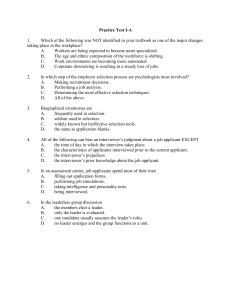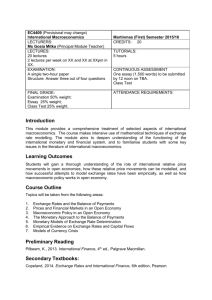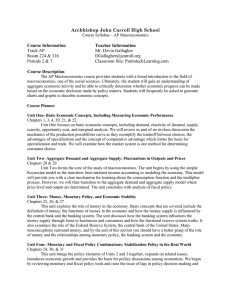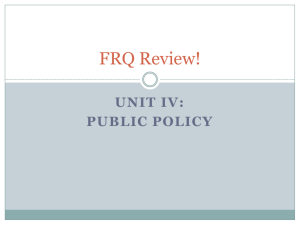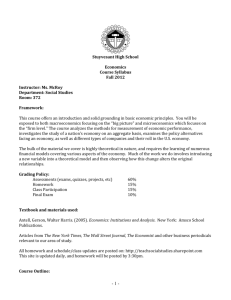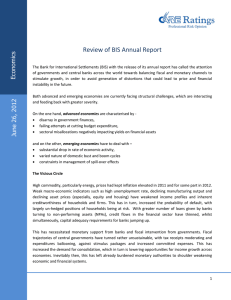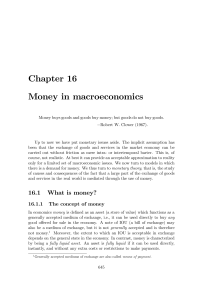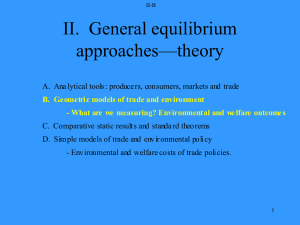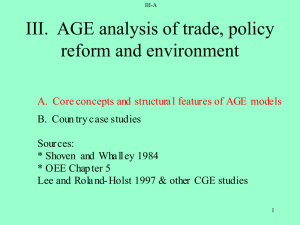WILLIAM RAINEY HARPER COLLEGE BUSINESS AND SOCIAL SCIENCE DIVISION GENERAL COURSE OUTLINE
advertisement
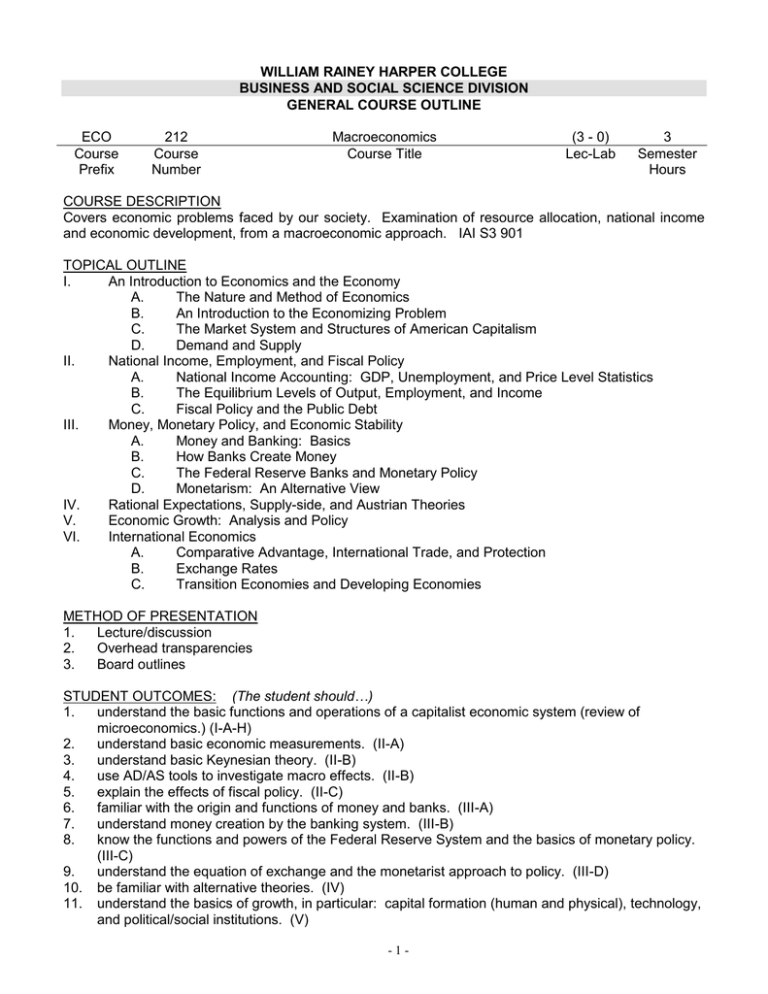
WILLIAM RAINEY HARPER COLLEGE BUSINESS AND SOCIAL SCIENCE DIVISION GENERAL COURSE OUTLINE ECO Course Prefix 212 Course Number Macroeconomics Course Title (3 - 0) Lec-Lab 3 Semester Hours COURSE DESCRIPTION Covers economic problems faced by our society. Examination of resource allocation, national income and economic development, from a macroeconomic approach. IAI S3 901 TOPICAL OUTLINE I. An Introduction to Economics and the Economy A. The Nature and Method of Economics B. An Introduction to the Economizing Problem C. The Market System and Structures of American Capitalism D. Demand and Supply II. National Income, Employment, and Fiscal Policy A. National Income Accounting: GDP, Unemployment, and Price Level Statistics B. The Equilibrium Levels of Output, Employment, and Income C. Fiscal Policy and the Public Debt III. Money, Monetary Policy, and Economic Stability A. Money and Banking: Basics B. How Banks Create Money C. The Federal Reserve Banks and Monetary Policy D. Monetarism: An Alternative View IV. Rational Expectations, Supply-side, and Austrian Theories V. Economic Growth: Analysis and Policy VI. International Economics A. Comparative Advantage, International Trade, and Protection B. Exchange Rates C. Transition Economies and Developing Economies METHOD OF PRESENTATION 1. Lecture/discussion 2. Overhead transparencies 3. Board outlines STUDENT OUTCOMES: (The student should…) 1. understand the basic functions and operations of a capitalist economic system (review of microeconomics.) (I-A-H) 2. understand basic economic measurements. (II-A) 3. understand basic Keynesian theory. (II-B) 4. use AD/AS tools to investigate macro effects. (II-B) 5. explain the effects of fiscal policy. (II-C) 6. familiar with the origin and functions of money and banks. (III-A) 7. understand money creation by the banking system. (III-B) 8. know the functions and powers of the Federal Reserve System and the basics of monetary policy. (III-C) 9. understand the equation of exchange and the monetarist approach to policy. (III-D) 10. be familiar with alternative theories. (IV) 11. understand the basics of growth, in particular: capital formation (human and physical), technology, and political/social institutions. (V) -1- 12. 13. 14. understand the principle of comparative advantage. (III-A) understand the issue of free trade vs. protectionism. (III-B) understand the factors determining exchange rates. (III-C) METHOD OF EVALUATION 1. Multiple choice and short essay tests 2. Brief essays 3. Critical writing exercises 4. Article critiques 5. Class participation TEXTBOOKS/INSTRUCTIONAL MATERIALS McConnell & Brue, Macroeconomics, 17th edition, McGraw Hill, 2008. Prepared by: Mark Healy Fall 2007 -2-
